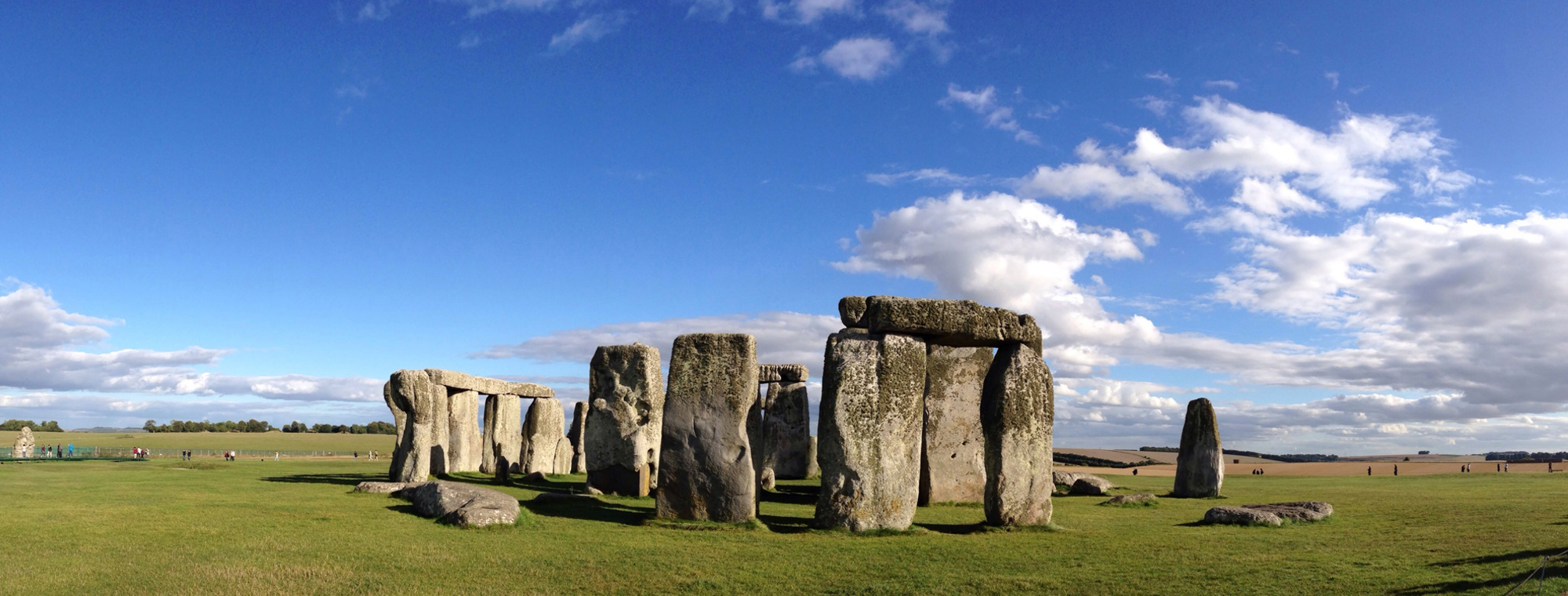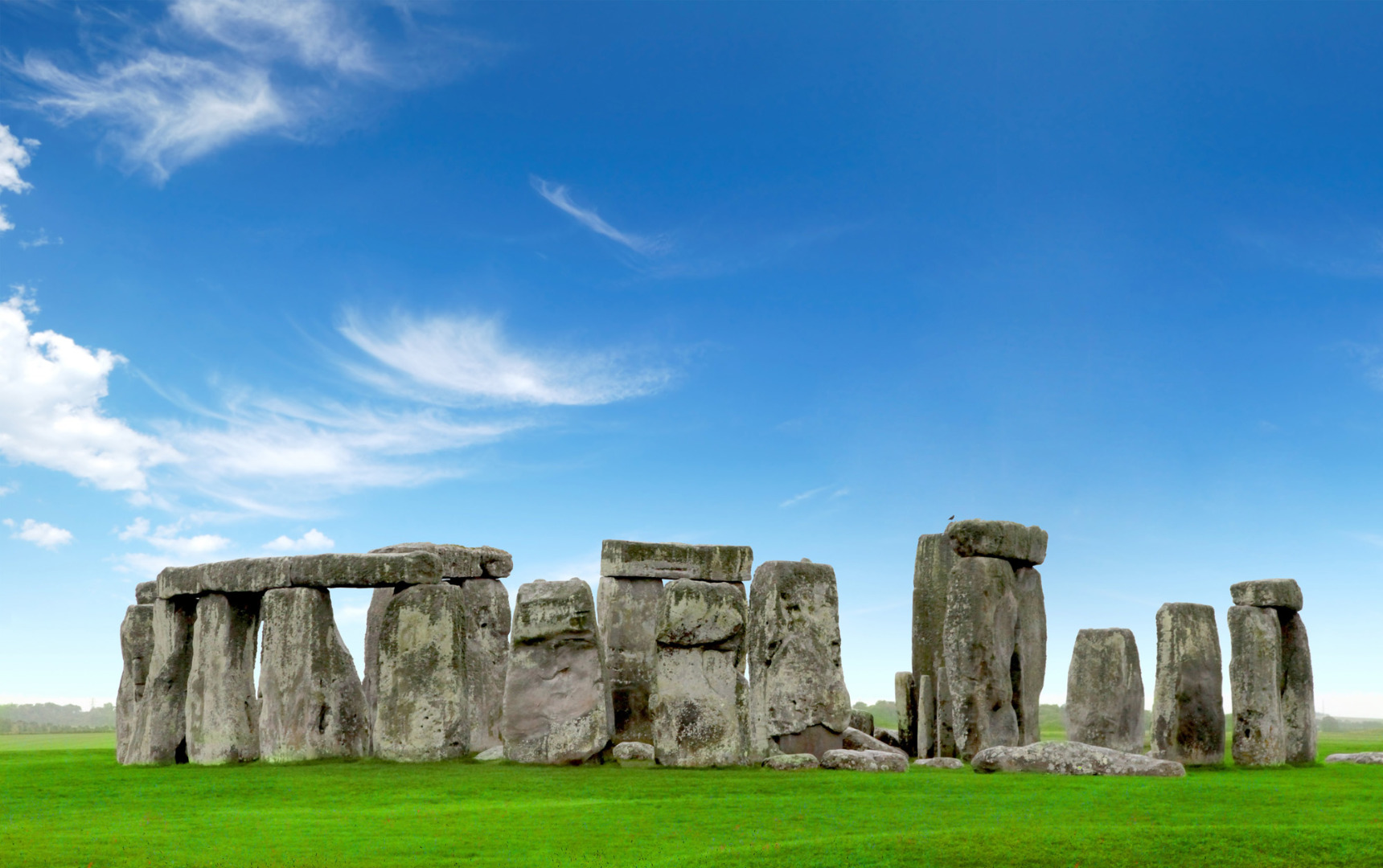Uncovering the Mysteries
of England's Stonehenge
of England's Stonehenge
A GET Guide to its Location, History, Builders, and Purpose

If you are planning a trip to England, you should not miss the opportunity to visit Stonehenge, which offers a breathtaking experience. The iconic ring of standing stones in Wiltshire, England, is a UNESCO World Heritage Site that has been a magnet for tourists for centuries, and it's not hard to see why.
What is Stonehenge?
A henge is a prehistoric monument consisting of a circular ditch, bank, and one or more standing stones. Stonehenge is the most famous example of a henge. It consists of a ring of standing stones weighing several tons, surrounded by a circular ditch and bank.
Where is Stonehenge?
Stonehenge is on the Salisbury Plain in Wiltshire, England. The massive henge is surrounded by an ancient landscape spanning thousands of years. The immediate surrounding area includes Neolithic and Bronze Age monuments and a site complex.

When was Stonehenge built?
Built around 3000 BC, Stonehenge is one of the most significant prehistoric sites in the world. Its fascinating history and cultural significance have led to countless myths, conspiracies, and legends surrounding it, making it a truly immersive and intriguing experience for visitors.
Who Built Stonehenge?
Stonehenge is believed to have been built by a group of people known as the Beaker culture around 2500 BC to 3000 BC. However, the exact purpose and construction methods of Stonehenge are still a mystery to archaeologists and historians. Despite the many conspiracies, the truth remains elusive, adding to the site's allure.
How was Stonehenge built?
Taking in the grandeur of Stonehenge, you cannot help but be overwhelmed by the sheer size and scale of the massive stones that surround you. Some of the henge's stones weigh as much as 50 tons, leaving you questioning how they were transported and erected in the first place. Theories abound, from the belief that ancient giants or otherworldly beings were responsible for their movement to more practical explanations involving ropes, pulleys, and human labor. Regardless of the true story behind the stones, the mystery and majesty of Stonehenge continue to captivate visitors from around the world.

Why was Stonehenge built?
The purpose of Stonehenge needs to be clarified, but it is believed to have been a site of religious and ceremonious significance. The site was thought to be used for various purposes, including as a ceremonial site, burial ground, and astronomical observatory. Today, it is a UNESCO World Heritage Site, attracting millions of visitors yearly.
Notable Features of Stonehenge and Nearby Locations
Avenue and Stone Circle of Stonehenge
Stonehenge is a circular arrangement of large standing stones, some topped with lintels. There is also an "Avenue," a processional pathway leading away from Stonehenge, marked by parallel banks and ditches.
Cursus Barrows North of Stonehenge
To the north of Stonehenge, there are several burial mounds or barrows. These are believed to be associated with the ritual and ceremonial activities in the vicinity.
Stonehenge Visitor Center
The Stonehenge Visitor Centre officially opened on December 18, 2013. The construction of the visitor center was part of a larger project aimed at improving the overall visitor experience at Stonehenge. The center provides educational resources, exhibitions, and amenities for visitors, offering information about the history, archaeology, and significance of Stonehenge. It also includes a transit system that transports visitors to and from the monument, helping to manage the impact of tourism on the site. The opening of the visitor center marked a significant enhancement to the facilities available for those exploring Stonehenge and its surroundings.
Durrington Walls Near Stonehenge
Located about 2 miles northeast of Stonehenge, Durrington Walls is a large henge enclosure surrounded by a ditch and bank. It is associated with the people who built and used Stonehenge and may have served as a settlement or ceremonial site.
The Cursus North of Stonehenge
To the north of Stonehenge and Durrington Walls, there is a long, straight ditch known as the Cursus. It is a sizeable Neolithic enclosure, and its exact purpose remains an archaeological debate.
Barrows and Tumuli Around Stonehenge
The landscape around Stonehenge is dotted with various burial mounds, barrows, and tumuli dating from different periods, indicating a long history of human activity in the area.
Whether you're a history buff, a curious traveler, or just looking for a unique experience, Stonehenge is a must-visit destination. So, if you're planning a trip to England, add it to your itinerary and get ready to be transported back in time to one of the world's most fascinating and mysterious sites.
Frequently Asked Questions About Stonehenge
Stonehenge is estimated to be around 5,000 years old.
Stonehenge is located about 90 miles west of London, in the county of Wiltshire, England.
Stonehenge was known to local people for centuries, but its archaeological significance wasn't fully appreciated until the 17th century.
There are approximately 80 stones in Stonehenge, including the large sarsen stones and smaller bluestones.
The tallest stones at Stonehenge are the sarsen stones in the outer ring, which stand up to 30 feet (9 meters) tall.
The Great Pyramids were built in Egypt around 2560 BC, while Stonehenge dates back to around 2500 BC in England. These two ancient structures are fascinating examples of human ingenuity and continue to be popular tourist attractions today.



















